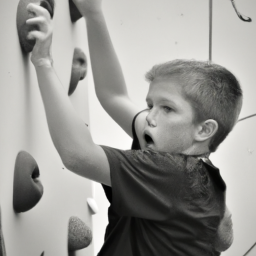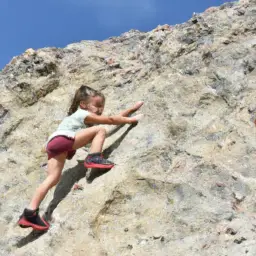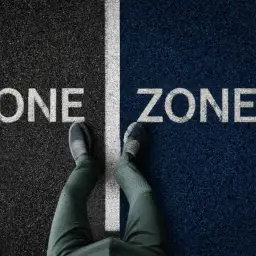Are you looking to help your young athlete develop grit and perseverance in their sports endeavors? Grit, or the ability to persist through challenges and setbacks, is a crucial trait for success in any sport. It can help athletes overcome obstacles, develop resilience, and ultimately achieve their goals. However, fostering grit in young athletes can be a challenge.
It requires a thoughtful approach that focuses on setting realistic goals, developing a growth mindset, and providing opportunities for failure. In this article, we will explore the concept of grit in sports and provide practical tips for how you can help your young athlete develop this important trait.
We will discuss the importance of setting realistic goals, developing a growth mindset, and providing opportunities for failure. We will also explore how to encourage self-motivation and foster a supportive environment that empowers young athletes to persevere through challenges and setbacks.
By the end of this article, you will have a deeper understanding of how to foster grit in young athletes and help them achieve success in their sports endeavors.
Key Takeaways
- Coaches play a crucial role in fostering grit in young athletes by creating a supportive environment that encourages them to push themselves beyond their limits.
- Embracing failure as a learning opportunity helps create a safe and supportive environment where athletes feel comfortable taking risks and learning from their mistakes.
- Encouraging athletes to set their own goals and fostering a love of the sport can help tap into intrinsic motivation, which is key to fostering grit in young athletes.
- Positive reinforcement, whether verbal, non-verbal, tangible, or social, is important in promoting self-motivation and celebrating athletes’ successes.
Understanding the Concept of Grit in Sports
You may have heard about grit in sports, and it’s all about digging deep and pushing through the challenges to achieve your goals, like climbing a steep mountain trail with determination etched on your face.
In sports, grit is the perseverance to push through the tough times and work towards your goals. It’s the mental and emotional toughness that separates the good athletes from the great ones.
The importance of practice can’t be overstated when it comes to developing grit in young athletes. Repeatedly facing challenges and overcoming them builds a sense of resilience and perseverance that can be applied to all aspects of life.
Coaches also play a crucial role in developing grit by creating a supportive environment that encourages athletes to push themselves beyond their limits. By providing constructive feedback and helping athletes set achievable goals, coaches can help young athletes develop the mental fortitude necessary to succeed in sports and in life.
Setting Realistic Goals
Achieving success in any field requires setting realistic goals that challenge and motivate individuals to push beyond their limitations. This holds true in sports as well. As a coach or a parent, you can help your young athletes set realistic goals that align with their abilities and aspirations. But, it’s not enough to just set goals, you also need to create accountability and measure progress.
To create accountability, you can encourage your athletes to share their goals with their teammates, coaches, or parents. This not only makes them accountable to themselves but also to their peers and mentors. It helps them stay committed and focused on their goals. You can also track their progress by maintaining a record of their achievements and milestones. This will not only give them a sense of accomplishment but will also help them identify areas where they need to improve.
| Column 1 | Column 2 |
|---|---|
| Specific | "I want to improve my shooting percentage by 10% in the next 3 months." |
| Measurable | "I will keep a record of my daily shots and calculate my percentage at the end of each week." |
| Achievable | "Based on my current skill level, a 10% improvement is achievable with consistent practice." |
By setting specific, measurable, and achievable goals, you can help your athletes develop a growth mindset and build resilience. It also helps them stay motivated and focused on their goals. So, take the time to sit down with your athletes and help them set realistic goals that align with their abilities and aspirations. Create accountability and measure progress to help them stay on track and achieve their goals.
Developing a Growth Mindset
So, you’re interested in developing a growth mindset in young athletes? Great!
In order to do this, it’s important to understand the difference between a fixed and growth mindset. Encouraging a growth mindset means helping athletes understand that their abilities can improve with effort and practice, and embracing failure as an opportunity to learn and grow.
Let’s dive into these key points and explore how to foster a growth mindset in young athletes.
Fixed vs Growth Mindset
Contrary to popular belief, having a fixed mindset can hinder a young athlete’s ability to persevere through challenges and setbacks. When a person has a fixed mindset, they believe that their abilities and traits are predetermined and cannot be changed or improved upon. This kind of thinking can lead to a lack of effort and motivation, as the individual believes that their success or failure is already determined. On the other hand, a growth mindset encourages individuals to believe that their abilities can be developed through hard work and dedication. This mindset fosters a desire to learn and improve, even in the face of obstacles.
To better understand the differences between a fixed and growth mindset, take a look at the table below:
| Fixed Mindset | Growth Mindset |
|---|---|
| Avoids challenges | Embraces challenges |
| Gives up easily | Persists through obstacles |
| Views effort as pointless | Sees effort as necessary for improvement |
As a coach or parent, it’s important to encourage a growth mindset in young athletes. By developing this mindset, athletes will be more likely to persevere through challenges and setbacks, ultimately leading to greater success in sports and in life.
Encouraging a Growth Mindset in Young Athletes
To cultivate a growth mindset in your young athletes, it’s crucial to emphasize the importance of hard work and dedication in improving their abilities.
As their coach or mentor, you must provide mindset praise that focuses on their effort and progress rather than just their natural talent. This means acknowledging the hard work they put in, the moments when they pushed through challenges and setbacks, and the specific strategies they used to overcome obstacles.
Additionally, it’s important to provide young athletes with role models who exemplify a growth mindset. These can be professional athletes who have overcome adversity, successful coaches who prioritize effort and growth, or even peers who exhibit a positive attitude towards challenges.
Encourage your athletes to look up to these individuals and study their mindset, and use their stories as inspiration to push themselves further. By emphasizing the importance of hard work, providing mindset praise, and offering role models, you can help foster a growth mindset in your young athletes that will serve them well both on and off the field.
- Celebrate Effort: Praise the effort and progress of your athletes
- Emphasize Growth: Encourage a focus on personal growth and development
- Provide Inspiration: Offer role models who demonstrate a growth mindset
- Encourage Perseverance: Teach your athletes to push through challenges and setbacks
Embracing Failure as a Learning Opportunity
Now that you understand the importance of encouraging a growth mindset in young athletes, it’s time to embrace failure as a learning opportunity.
It’s inevitable that setbacks will occur in sports, but it’s how we respond to them that truly matters. Instead of dwelling on the negative aspects of failure, use it as a chance to learn and grow.
One way to do this is through positive reinforcement. Instead of punishing athletes for their mistakes, highlight what they did well and encourage them to keep trying.
This helps create a safe and supportive environment where athletes feel comfortable taking risks and learning from their mistakes. By embracing failure as a learning opportunity and providing positive reinforcement, you can foster perseverance in young athletes and help them achieve their goals.
Providing Opportunities for Failure
By allowing young athletes to experience setbacks and learn from them, you can help build their grit and resilience on the field or court. It’s important to provide opportunities for failure because it teaches athletes valuable lessons that they can’t learn from winning alone.
Here are three ways to provide opportunities for failure and help your athletes develop their grit:
-
Set goals that are challenging but achievable. Encourage your athletes to push themselves beyond their limits, but make sure the goals are within reach. This will help them develop a growth mindset and learn that failure is a necessary step on the path to success.
-
Create an environment where it’s safe to make mistakes. Let your athletes know that it’s okay to fail and that you’re there to support them no matter what. When athletes feel safe to take risks, they’re more likely to try new things and develop their skills.
-
Provide feedback that focuses on effort and improvement. Instead of only giving feedback on the end result, praise your athletes for their hard work and progress. This will help them see that success isn’t just about winning, but about the effort they put in along the way.
Encouraging Self-Motivation
Motivating yourself to achieve your goals can be challenging, but with the right mindset and support, it’s possible to stay driven and inspired. Intrinsic motivation, or the drive that comes from within, is key to fostering grit in young athletes. Encouraging them to set their own goals and fostering a love of the sport can help them tap into that intrinsic motivation.
Positive reinforcement is also important in promoting self-motivation. Praising effort rather than just outcome can help athletes appreciate the process of working towards their goals. Additionally, encouraging athletes to reflect on their progress and celebrate their successes, no matter how small, can help boost their confidence and drive to continue improving. The following table illustrates some ways to provide positive reinforcement:
| Positive Reinforcement | Examples |
|---|---|
| Verbal praise | “Great effort today, keep it up!” |
| Non-verbal praise | High-fives, fist bumps |
| Tangible rewards | Medals, trophies |
| Social reinforcement | Shoutouts on social media, recognition in team meetings |
By promoting intrinsic motivation and positive reinforcement, coaches and parents can help young athletes develop the self-motivation necessary to persevere through challenges and achieve their goals.
Fostering a Supportive Environment
Creating a supportive environment for your child to pursue their passions in a safe and encouraging space can lead to greater self-confidence and a sense of belonging. As a parent, your involvement in your child’s athletic journey can make all the difference.
Here are three ways to foster a supportive environment:
-
Provide positive reinforcement: Celebrate your child’s successes, no matter how small they may seem. Let them know that you’re proud of their hard work and dedication. This will motivate them to continue pushing through tough times.
-
Encourage open communication: Create a safe space where your child can come to you with any concerns or questions they may have. Listen to their thoughts and feelings and provide guidance where needed. This will help them feel heard and understood.
-
Focus on the process, not just the outcome: Encourage your child to enjoy the journey, rather than solely focusing on winning. Emphasize the importance of hard work, perseverance, and growth. This will help them develop a healthy mindset and love for the sport.
By implementing these practices, you’re not only helping your child become a better athlete, but also a more confident and resilient individual. Your support and encouragement can help them develop the grit necessary to overcome obstacles and achieve their goals.
Frequently Asked Questions
How does grit in sports translate to success outside of athletics?
When it comes to grit in sports, the importance of transferable skills can’t be overstated.
The perseverance and determination required to excel in athletics are qualities that can be applied to all areas of life, from academics to career success.
The role of mindset in developing grit is crucial too. By cultivating a growth mindset, young athletes can learn to view challenges as opportunities for growth and development, rather than insurmountable obstacles.
Ultimately, the grit developed through sports can translate to success in all areas of life, making it a valuable investment in a young person’s future.
What are some common obstacles that young athletes face when trying to develop grit?
As a young athlete, you may face a number of obstacles when trying to develop your mental toughness and ability to overcome adversity. These could include things like self-doubt, fear of failure, and pressure from parents or coaches to perform at a high level.
Additionally, you may struggle with balancing your athletic pursuits with other responsibilities like schoolwork or social obligations. Despite these challenges, it’s important to remember that developing grit is a process, and that setbacks and failures are a natural part of that process.
By staying focused, setting realistic goals, and seeking out support from coaches, teammates, and mentors, you can build the resilience and perseverance necessary to succeed both on and off the field.
How can coaches and parents balance pushing athletes to persevere with avoiding burnout or injury?
When it comes to balancing motivation and avoiding burnout in young athletes, it’s important for coaches and parents to pay close attention to their physical and emotional needs.
Nurturing resilience is key, but pushing too hard can lead to injury or exhaustion. Encouraging breaks and rest days, as well as open communication about physical and emotional limits, can help prevent burnout and keep young athletes on track towards their goals.
Additionally, coaches and parents should prioritize safety and injury prevention, ensuring that young athletes are properly trained and equipped to avoid unnecessary risks.
By balancing motivation with rest and injury prevention, coaches and parents can help young athletes develop grit and perseverance without sacrificing their health and well-being.
What role do teammates and peers play in fostering grit in young athletes?
Teammate support and leadership influence are crucial in fostering grit in young athletes.
Your peers can provide a sense of camaraderie and motivation, pushing you to work harder and persevere through tough times.
Additionally, strong leaders on the team can set an example for others to follow and inspire everyone to push beyond their limits.
When you feel supported by your teammates and see their determination and resilience, it can fuel your own grit and help you achieve your goals.
Ultimately, a positive team environment can make all the difference in cultivating a culture of perseverance and success.
Can grit be taught, or is it a trait that some individuals are simply born with?
You may be wondering whether grit is a trait that some people are simply born with, or if it can be taught. This debate is often referred to as nature versus nurture.
While some individuals may have a natural inclination towards perseverance, research suggests that the impact of environment is also significant. Factors such as parenting style, access to resources, and exposure to challenging experiences can all play a role in developing grit.
Therefore, while some individuals may have a head start in terms of grit, it’s possible for anyone to cultivate this trait through intentional effort and a supportive environment.
Conclusion
So there you have it, ways to instill grit in young athletes. Remember that grit isn’t something that comes naturally to everyone, but it’s a skill that can be developed.
By setting realistic goals, developing a growth mindset, providing opportunities for failure, encouraging self-motivation, and fostering a supportive environment, you can help your young athletes become more resilient and determined.
Keep in mind that fostering grit in young athletes is not just about helping them succeed in sports, but it’s also about preparing them for life. With grit, they’ll be able to face challenges and setbacks with a positive attitude and the determination to keep going.
So, start implementing these strategies today and watch your young athletes grow into strong, resilient individuals.












































































































